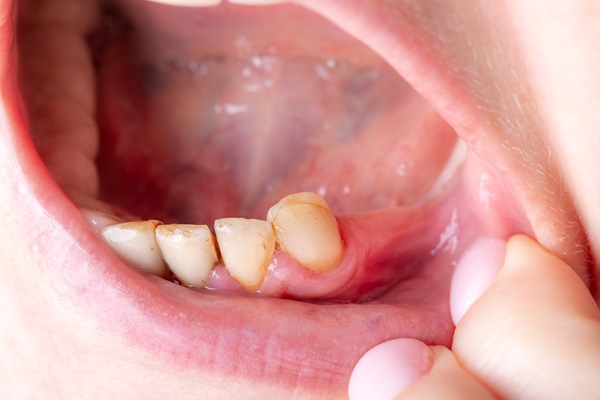What Is Periodontics?

Periodontics is a branch of dentistry that focuses on studying, diagnosing, and treating issues that affect the gums and the bone structures that support teeth. Periodontal disease is the leading dental problem that periodontics focuses on.
Periodontal disease is an infection of gum tissues caused by the bacteria in plaque and tartar getting below the gum line. Plaque is the sticky film that is covering your teeth when you wake up in the morning or after a nap. It contains bacteria and hardens into tartar when left on teeth for more than a day. Plaque can be cleaned off by brushing or flossing teeth, but tartar deposits cannot. A metal tool called a scaler is used to scrape these hard deposits off teeth surfaces. Tartar builds up at the base of teeth, and it can eventually work its way into gum pockets and teeth roots.
Common treatments used in periodontics
Let us take a look at a few of the treatments used to treat infected gum tissues.
1. Teeth cleanings
Teeth cleanings are the most commonly performed preventative treatments in dentistry. They involve the dentist removing plaque and tartar from teeth surfaces and polishing the teeth afterward. Cleaning protects teeth against the two most common dental problems: gum disease and tooth decay.
The American Dental Association recommends getting teeth cleaned at least two times per year. The procedure can help reverse the first stage of periodontal disease: gingivitis.
2. Deep cleanings
A deep cleaning is a more extensive version of a standard teeth cleaning. It involves everything done during a regular teeth cleaning, as well as removing tartar from teeth roots and gum pockets. The procedure is typically broken down into multiple treatments because recovery involves dealing with gum soreness for a few days.
3. Gum grafts
Periodontal disease leads to symptoms like gum tissues pulling away from teeth, which leaves teeth roots exposed, creating various problems. Teeth roots are not as resistant to the acids made by oral bacteria because they do not have enamel protecting their outer layer. Instead, they are covered with cementum, which is not as durable. Exposed teeth roots are vulnerable to decay for this reason.
Gum grafts are typically recommended to cover up exposed teeth roots. The procedure requires minor oral surgery and involves taking donor tissues from other parts of the mouth and using them to cover up the exposed teeth roots. Gum grafts are also performed to restore gum structures that have been damaged by periodontal disease.
4. Bone grafts
Bone grafts are recommended when the bone structures that hold teeth in place have been damaged. The procedure is often performed using sterilized donor tissues from cows or synthetic materials that stimulate the production of healthy bone tissues. Bone grafts are also performed when a patient has jawbone deterioration due to missing teeth. They can thicken the jawbone so the missing tooth can be replaced with an implant.
Keep your gums healthy
Are you noticing any symptoms of periodontal disease? Call or stop by our Huntsville clinic to set up an appointment with our dentist.
Request an appointment here: https://www.yourhuntsvilledentist.com or call René A. Talbot, DDS at (256) 382-6690 for an appointment in our Huntsville office.
Check out what others are saying about our services on Yelp: Periodontics in Huntsville, AL.
Recent Posts
Orthodontics is a branch of dentistry that focuses on teeth straightening options such as Invisalign®. However, because having straight teeth is so important to oral health, many types of dentists offer orthodontic services, including general dentists. Read on to learn more about the benefits of Invisalign.Like other clear aligners, Invisalign falls under the category of orthodontic…
Knowing when you need an emergency dentist can help save teeth, preserve oral health, and prevent serious complications. From sudden tooth pain to dental trauma, understanding the signs that require immediate attention helps ensure timely and effective care. Learning more about the role of an emergency dentist can prepare patients to act quickly in critical…
Severe tooth decay or damage is often treatable through root canal therapy. Despite its reputation, undergoing a root canal is similar to filling a cavity and is generally no more uncomfortable. Learning about the procedure and the recovery process can help alleviate concerns, helping patients see the benefits of preserving their smile with a root…
Choosing the right kids' dentist is one of the most important decisions you will make for your child's oral and overall health. This dental professional specializes in providing dental care tailored to the unique needs of young patients, fostering a positive experience with dental care from a young age. Working with an experienced pediatric dentist…


